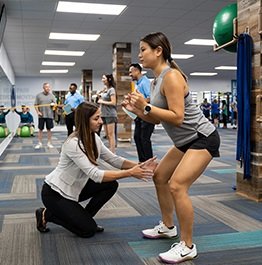
How to Train for a 5K
September 18, 2019So, you’re interested in running a 5K? That’s great! This race is a great distance for beginning runners and experienced runners alike. Whether you are pushing yourself to try your first race or setting your sights on a new PR (personal record), you need to have a plan. Having a plan for your training and for race day are vital to ensuring a good experience and getting the most out of all your hard work
Set a Goal
The first thing you need for a training plan is your end goal. This gives you something to train towards and motivates you to lace up those running shoes every day. Your goal can be as simple as finishing the race or as complex as setting a new 5K world record (which is 12 min 37 sec for men and 14 min 11 sec for women!) It doesn’t have to be that fast, but I do recommend setting a goal time for yourself that is challenging yet attainable.
Training Time
Next, you need to figure out how much time you have to prepare for your race. Ideally, you should give yourself about 5-8 weeks depending on your how much you have been running recently, running experience, and the goal you have in mind. More time is always better especially for the newbie runners.
The next step is figuring out how many days per week you have free to dedicate to training, which should be between 3-5 days. I’ll give you a moment to check your calendar before we move on. (Keep in mind, giving yourself a day in between harder or longer runs, especially at the start of a program, will be helpful in giving your muscles and joints time to recover for your next training session.)
Types of Runs
Now that you’ve picked out your available training days you need to figure out what type of runs you should be doing. In the first few weeks of training keep it simple, running between 1-4 miles per run.
The goal in the first few weeks should be to get your body used to the stresses of running so focus on consistently running on the days you’ve set aside for training and don’t worry as much about the pace. Once your body has adjusted to running 3-5 times per week, you can add in the fun stuff! Here are some examples to help vary your runs and make you a better and stronger runner:
Long, Slow Distance (LSD)
A longer than usual run at a slower pace than your desired race pace. This is usually done once per week to help improve your cardiovascular system and build endurance in your muscles. The LSD run for a 5k is typically up to 8 miles but usually closer to 5 or 6 for beginners.
Tempo Run
This run is performed with a portion of the run done at a comfortable but hard effort. The purpose of this run is to improve your lactate threshold level which basically allows you to run at a faster pace while burning fat (YAY!) instead of your very limited glycogen reserves. A typical tempo run starts with an easy run pace for about 10 min, the tempo portion which is about 20 minutes, and finishing with another easy paced 10 min run. There are many different ways to determine your tempo pace, but I recommend a pace that is 2 minutes per mile slower than your desired race pace or at an effort that you would not be able to maintain a conversation at easily. This takes practice but is a great tool once you get it down!
Hill Repeats
Just like it sounds, you’re running up and down a hill over and over. These repeats are tough, but they help build some serious strength and make running on flat ground seem like a breeze! The hill should be about 4-6 percent gradient and the repetitions should take about 40-60 seconds with about 2 minutes between repetitions.
Intervals
These are speed days where you are running short, flat intervals at a fast pace. These improve your ability to run at and maintain a faster pace for longer distances by packing a lot of short and fast paced runs into one workout. You can vary the distances of the intervals or run one set distance repeatedly; i.e. running 2 x 200m, 400m, and 600m or running 6 x 400m
Base Run
These are your normal pace runs at a short to moderate length. They make up most of the runs that you will do. These runs are not meant to be challenging, but as your endurance and speed improve, they will become faster naturally.
So now you have the tools you need to get started on your 5K training plan! Things to remember: vary your runs to keep things challenging and interesting, always do at least a 5 min warm up AND cool down, refuel after your runs with plenty of water and nutritious food, and most of all, HAVE FUN!
REQUEST A FREE CONSULTATION
We will contact you to confirm your appointment.WANT MORE TIPS?
Robbie loves watching movies and playing board games, especially with trivia. He has loved sports his entire life, both playing and watching. His favorite sports to watch are hockey and football, with soccer and ultimate Frisbee as his favorite sports to play. Robbie also participates in triathlons and aims to finish an Ironman in the future.
Latest posts by Robbie Grant, PT, DPT (see all)
- Perfecting Your Squat While Exercising - February 13, 2024
- 7 Habits to Optimize Your Mental Health - October 15, 2020
- How to Train for a 5K - September 18, 2019
- Alternatives to running for people with knee pain - May 01, 2018
Reader Interactions
Leave a comment Cancel reply
You must be logged in to post a comment.
SIGN UP FOR
LIFE+ is a FREE membership
that offers:
• Informative Newsletters
• Health & Wellness Tips
• Videos from Our Experts
• Special offers
…and much more!
SEARCH





